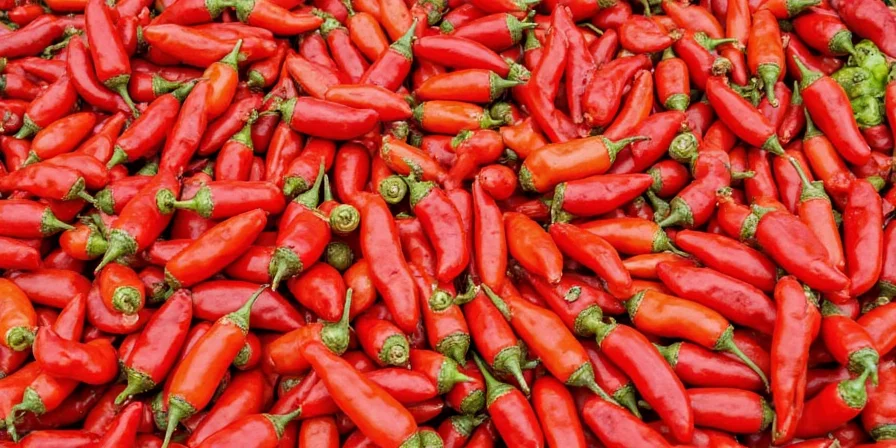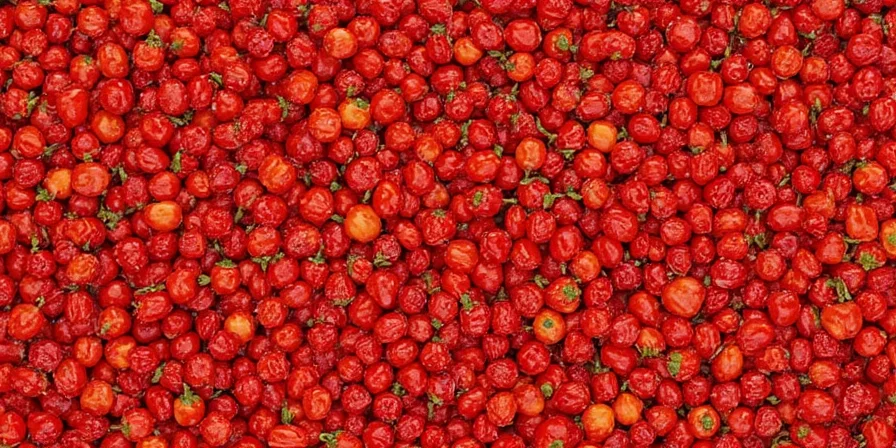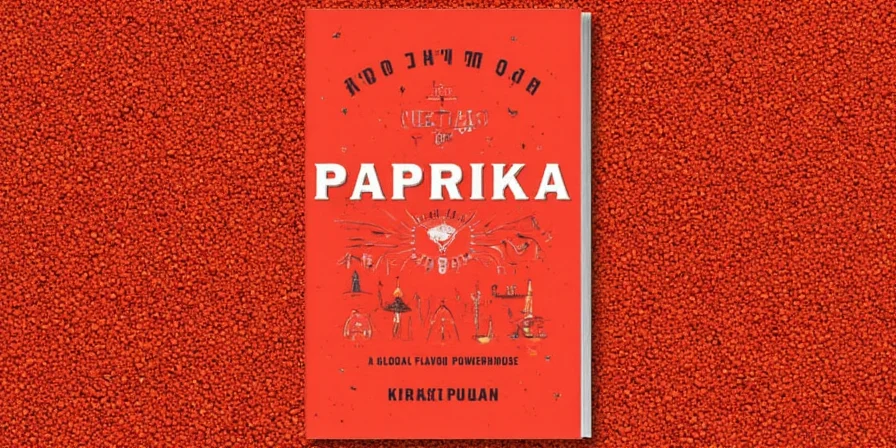Paprika: From the Fields of Hungary to Your Kitchen Cabinet

Where Does Paprika Originate From?
If you've ever taken a bite of a Hungarian goulash or a Spanish chorizo, chances are you've tasted the magic of paprika. But where did this fiery spice come from? The answer lies in the heart of Central and Eastern Europe, specifically in the region now known as Hungary. Paprika originates from the Capsicum annuum plant, which was first cultivated by indigenous peoples in the Americas. However, it was the Spanish who brought the seeds to Europe during the 16th century, sparking a culinary revolution that would soon take root in Hungary.
In the 16th century, a group of Spanish traders brought Capsicum annuum seeds to Hungary. The local farmers there began cultivating these plants, and by the 17th century, Hungary had become a major center for paprika production. Over time, the spice evolved into a cornerstone of Hungarian cuisine, giving rise to iconic dishes like gulyás (goulash) and halászlé (fish soup). Today, paprika is not just a Hungarian treasure—it's a global flavor phenomenon.
Why Paprika is a Kitchen Superstar
Paprika is more than just a colorful spice; it's a powerhouse of flavor, nutrition, and versatility. Whether you're a professional chef or an amateur cook, understanding how to store and use paprika can elevate your dishes from good to extraordinary. Let's dive into the world of paprika storage and usage hacks, and uncover the secrets that make this spice so special.
Flavor and Nutritional Profile of Paprika
| Component | Function | Health Benefits |
|---|---|---|
| Capiscin | Provides the characteristic heat | May help with pain relief and metabolism |
| Vitamin A | Essential for eye health | Supports immune function and skin health |
| Vitamin C | Supports immune function | Acts as an antioxidant and boosts collagen production |
| Carotenoids (like Beta-Carotene) | Responsible for color and flavor | Supports heart health and eye function |
As you can see, paprika is not only a flavor enhancer but also a nutritional powerhouse. Its carotenoid content gives it that rich, vibrant color, and its capiscin content provides a gentle heat that can be adjusted based on the variety you choose.
Choosing the Right Paprika for Your Needs
There are several types of paprika, each with its own flavor profile and level of heat. Here's a quick breakdown to help you choose the right one for your culinary needs:
- Smoked Paprika: Adds a deep, smoky flavor. Great for Spanish dishes like chorizo and paella.
- Sweet Paprika: Mild and sweet, perfect for adding color and flavor to stews, soups, and sauces.
- Hot Paprika: Spicy and punchy, ideal for adding heat to dishes like Hungarian goulash or chili.
- Paprika Powder: A fine, versatile powder that can be used in both sweet and savory recipes. It’s a staple in many cuisines around the world.
When choosing paprika, always look for quality. High-quality paprika should have a deep, rich color and a strong, distinct aroma. Avoid paprika that has a dull color or a musty scent, as this can be a sign of poor quality or improper storage.
Proper Storage of Paprika: Keep It Fresh and Flavorful
One of the most common mistakes people make when storing spices is to keep them in the pantry for too long or in the wrong container. The key to keeping paprika fresh is to store it properly. Here are some storage hacks that will help you keep your paprika at its best:
Storage Tips for Paprika
- Use airtight containers: Always store your paprika in an airtight container to prevent moisture and air from degrading its flavor and potency.
- Keep it cool and dark: Heat and light can cause paprika to lose its color and flavor over time. Store it in a cool, dark place like a kitchen cabinet or spice drawer.
- Avoid moisture: Moisture is the enemy of all spices. Never store paprika in a humid area, and avoid using containers that are not completely sealed.
- Use small quantities: Paprika loses its potency over time. It's best to buy small quantities and use them within six months for the best flavor.
- Refrigerate for long-term storage: If you're planning to store paprika for a longer period, you can refrigerate it in an airtight container. This will help preserve its flavor and color for up to a year.
By following these simple storage tips, you can ensure that your paprika stays fresh, flavorful, and ready to use for all your culinary needs.
Creative Ways to Use Paprika in the Kitchen
Paprika is one of the most versatile spices in the world. From savory dishes to sweet desserts, there are countless ways to use paprika in your cooking. Here are some creative ideas to get you started:
10 Ways to Use Paprika in Your Cooking
- Season meats: Sprinkle paprika on chicken, beef, or pork before grilling or roasting for a rich, smoky flavor.
- Make paprika-infused oil: Combine paprika with olive oil and let it sit for a few days to create a flavorful oil that can be used in dressings, marinades, or drizzled over roasted vegetables.
- Add to soups and stews: Paprika is a staple in many traditional soups and stews, like Hungarian goulash and Spanish gazpacho. It adds depth and color to these dishes.
- Use in marinades: Mix paprika with garlic, herbs, and olive oil for a quick and easy marinade that works wonders on chicken, fish, or vegetables.
- Make paprika paste: Blend paprika with garlic, onions, and a bit of water to create a paste that can be used as a base for sauces, dips, or spreads.
- Enhance sauces and gravies: A pinch of paprika can add a rich, smoky flavor to gravies, sauces, and even mayonnaise-based dressings.
- Use in baked goods: Paprika can be used in sweet recipes like cakes, cookies, and breads to add a subtle warmth and depth of flavor.
- Make paprika-infused butter: Combine paprika with softened butter and herbs for a flavorful compound butter that can be used on steaks, vegetables, or bread.
- Use in spice blends: Paprika is a common ingredient in many spice blends, like Spanish paprika blends, Hungarian paprika mixes, and even some curry powders.
- Enhance roasted vegetables: Toss roasted vegetables like carrots, sweet potatoes, or bell peppers with a bit of paprika for a rich, smoky flavor that elevates the dish.
These are just a few of the many ways you can use paprika in your cooking. The possibilities are endless, and the spice can be tailored to fit any dish, from the most traditional to the most experimental.
The Science of Flavor: How Paprika Enhances Taste
Have you ever wondered why paprika makes your dishes taste so good? The answer lies in the science of flavor. Paprika contains a compound called capsaicin, which is responsible for its heat and flavor intensity. However, not all paprika is the same—different varieties have different levels of capsaicin and other flavor compounds that contribute to their unique taste profiles.
For example, smoked paprika contains higher levels of phenolic compounds, which give it its distinctive smoky flavor. These compounds are also responsible for the deep, earthy aroma that makes smoked paprika a favorite in many Spanish and Hungarian dishes.
On the other hand, hot paprika is rich in capsaicin, which gives it its fiery kick. However, even hot paprika has a complex flavor profile that includes notes of sweetness, bitterness, and umami. This makes it a versatile spice that can be used in a wide range of dishes, from spicy curries to mild stews.
Understanding the science behind paprika can help you choose the right variety for your cooking needs. Whether you're looking for a mild, sweet flavor or a bold, spicy kick, there's a paprika that's perfect for the job.
Common Mistakes When Using Paprika—and How to Avoid Them
Even though paprika is a versatile and flavorful spice, there are a few common mistakes that people make when using it. Here are some of the most common errors and how to avoid them:
- Using too much: Paprika can easily overpower a dish if used in excess. Start with a small amount and adjust to taste.
- Using low-quality paprika: Low-quality paprika can be bitter, bland, or even have an off-putting aroma. Always choose high-quality paprika that has a deep, rich color and a strong, distinct flavor.
- Not toasting paprika: Toasting paprika in a dry pan before using it can enhance its flavor and aroma. This is especially important for smoked paprika, which can become even more intense and flavorful when toasted.
- Using paprika in the wrong dish: While paprika is a versatile spice, it's not always the best choice for every dish. For example, paprika can be a bit too strong for delicate dishes like soufflés or custards. It's best to use it in dishes where its flavor can shine through.
- Not storing paprika properly: As we've discussed earlier, improper storage can cause paprika to lose its flavor and potency. Always store paprika in a cool, dark place in an airtight container.
By avoiding these common mistakes, you can ensure that your paprika is used to its full potential and that your dishes are always at their best.
Final Thoughts: Embrace the Magic of Paprika
Paprika is more than just a spice—it's a flavor powerhouse, a nutritional gem, and a culinary treasure. Whether you're a professional chef or a home cook, understanding how to store and use paprika can elevate your cooking to new heights. From its origins in Hungary to its use in cuisines around the world, paprika has a rich history and a bright future in the kitchen.
So the next time you're in the grocery store, take a moment to appreciate the vibrant red color of paprika. It's not just a spice—it's a journey of flavor, history, and culture that can be enjoyed in every dish you make.
Now go forth and spice up your life with the magic of paprika!

FAQ: Paprika Storage & Usage
| Question | Answer |
|---|---|
| Can I use paprika in sweet dishes? | Yes! Paprika can be used in sweet dishes like cakes, cookies, and breads to add a subtle warmth and depth of flavor. |
| How long does paprika last? | Paprika can last up to a year if stored properly in an airtight container in a cool, dark place. |
| What is the difference between sweet and hot paprika? | Sweet paprika is mild and sweet, while hot paprika has a spicier kick. They can be used in different dishes based on the desired flavor profile. |
| Can I toast paprika? | Yes, toasting paprika in a dry pan can enhance its flavor and aroma, especially for smoked paprika. |
| What dishes is paprika commonly used in? | Paprika is commonly used in dishes like goulash, chorizo, paella, and many other European and Latin American dishes. |
Now that you've learned the secrets of paprika, it's time to put them into practice. Whether you're making a traditional dish or experimenting with new flavors, paprika is sure to add a touch of magic to your cooking.
So go ahead—open that jar of paprika, and let the flavor of Hungary (and beyond) shine in your kitchen.

Further Reading: Explore the World of Spices
If you're interested in learning more about other spices and their uses, be sure to explore the following topics:
- Cumin: The Flavor of the East
- Cinnamon: The Sweet and Spicy Spice of the World
- Curcuma: The Golden Spice of Health and Flavor
- Coriander: The Versatile Spice That Works in Every Kitchen
Each of these spices has its own unique history, flavor profile, and uses in the kitchen. By exploring them, you can expand your culinary repertoire and discover new ways to enhance your cooking.
So why wait? The world of spices is waiting for you—and it's more exciting than you ever imagined.

Happy cooking, and may your dishes always be rich in flavor and love!










 浙公网安备
33010002000092号
浙公网安备
33010002000092号 浙B2-20120091-4
浙B2-20120091-4